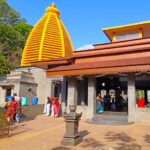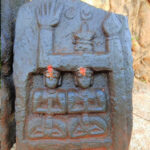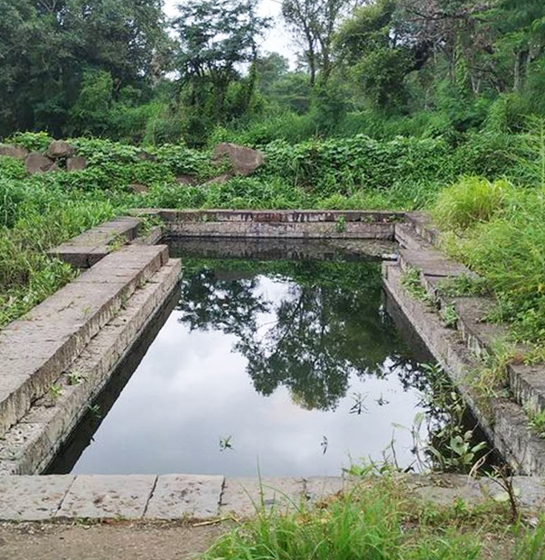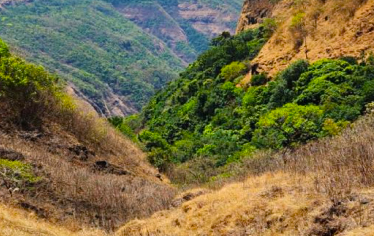Mula-Mutha River Mulshi
The Life-giving Mula – Mutha of Mulshi
Mula and Mutha are two major rivers in the Mulshi Taluka. Today, we will explore their history and significance. In the ancient manuscript Bhima Mahatmya, the poet Dattakinkar has described the glory of Bhima, along with interesting stories of its tributaries. In the 26th chapter of this text, there are descriptions of the confluence of the Mula, Mutha, and Bhima rivers. Below are the concluding lines of the chapter:
“Itishri Padya Puran, Uttarakhande Bhima Mahatmye Mula-Mutha Sangam Mahima Namashatvishati Namah Adhyaya”
(In English: “Thus concludes the 26th chapter of the Bhima Mahatmya, narrating the glory of the Mula-Mutha confluence.”)
On the Bhimashankar mountain, King Gajanan began rigorous devotion to Lord Shiva. This made Lord Mahadev pleased, but Indra, the king of gods, feared that Gajanan’s devotion would result in him losing his position. To disrupt his meditation, Indra sent two apsaras (celestial nymphs) from his court. However, Gajanan recognized the plan and cursed them, saying, “You will turn into rivers!” After much pleading, Gajanan softened the curse, stating that they would find liberation at the confluence of the Bhima river. These two apsaras eventually transformed into the Mula and Mutha rivers.
Mula River:
The Mula River originates near the village of Nandivli, in the Paud Valley, at a place called Devghar. It is believed that the river emerges from the root of a large tamarind tree, which is why it was named Mula. Later, a tributary named Nila joins the Mula. Today, the river is submerged in the Mulshi Dam, and its flow is not visible. A large dam, known as the Mulshi Dam, was constructed by the Tata Group, which also generates electricity for Mumbai. Further details of this project will be discussed later. Also, the small river Valaki from the Kolvan valley and the Ram river, originating near Bhukum village, flow into the Mula. The Pavana river joins the Mula near Khadki in Pune.
Mutha River:
The Mutha River originates from the Mutha Valley, near the village of Vegre, at a place called Mandav Khadak Vasti. There is a cow’s mouth-shaped structure at the source. The name Mutha comes from the spring that emerges from a hole in the Mutha-shaped structure. A dam named Temghar was constructed on this river but, unfortunately, it has become dilapidated. Two rivers, the Ambi and the Mosi, join the Mutha as it flows. The Panshet Dam is constructed on the Ambi river, and the Varsgaon Dam is on the Mosi river. These rivers then merge to form the famous Khadakwasla Dam near Pune. Together, the four dams – Khadakwasla, Varsgaon, Panshet, and Temghar – supply water to Pune.
The Confluence:
Thus, the life-giving Mula and Mutha rivers from Mulshi Taluka meet at the Sangam Bridge in Pune and join the Bhima river. However, a sad reality is that after these rivers flow into Pune, they transform into drains. The once-thriving valleys that housed ancient civilizations and cultures now suffer from sewage and foul odors. This situation must change.
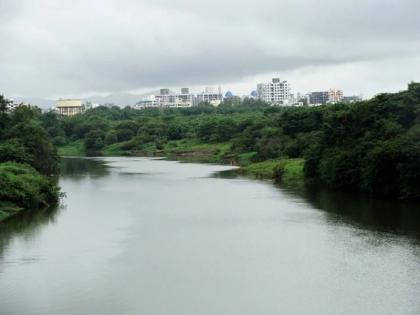

Mula-Mutha River Mulshi Details
Pune to Mula-Mutha River Mulshi
Duration: 1.5 to 2 hours

What to Expect
A mix of dense forest and open plateau.
– Various fruit-bearing trees and lush vegetation.
– Historical and cultural sites along the trail

Best Time to Visit
– Winter (October to February): Ideal for trekking due to pleasant weather.
– Monsoon (June to September): Offers lush greenery and waterfalls but requires extra caution due to wet conditions.
– Summer (March to May): Can be quite hot; start hikes early to avoid the heat.

How to reach there
Mulshi is accessible by road from Pune and Mumbai. Public transportation options and private vehicles are available for reaching the Mula-Mutha River.

Tips for Hikers
Carry at least 3 liters of water and some snacks.
– Consider hiring a local guide for a more informative experience.
– Start early to avoid the midday heat.
Experience the various trekking routes of Mulshi and immerse yourself in the natural beauty and cultural richness of this captivating region. Whether you seek adventure, tranquility, or historical exploration, Mulshi offers you a unique trekking experience.
admin
Published: October 10, 2024
